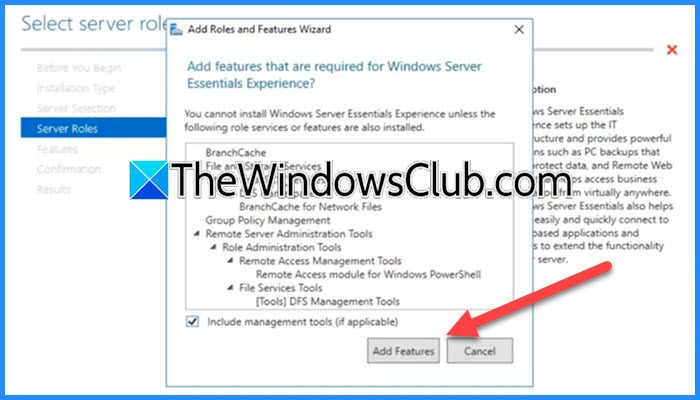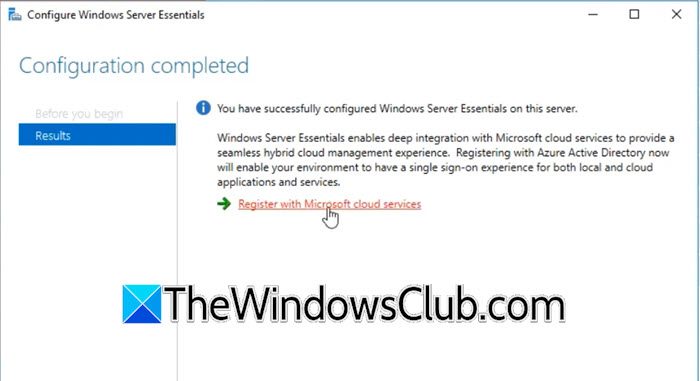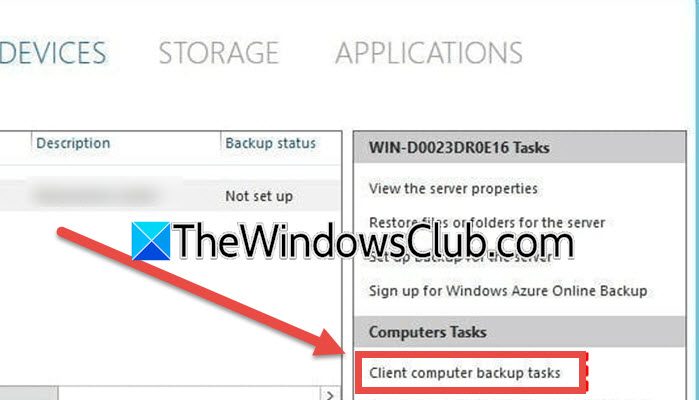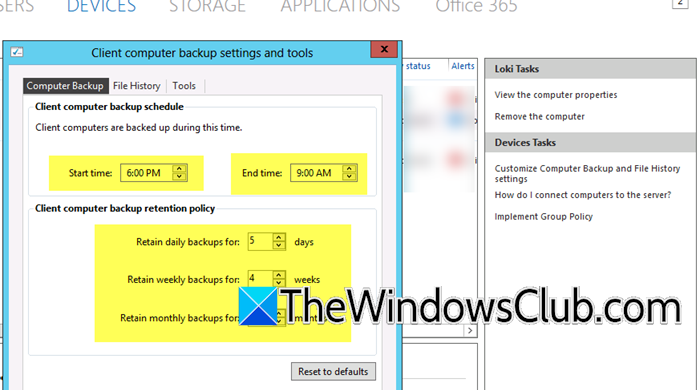Backing up client computers in Windows Server Essentials is a key step in safeguarding valuable data and maintaining smooth operations. Administrators can easily configure automated backups, monitor backup status, and restore data when needed. This guide will walk us through the steps to set up and manage client computer backup effectively.
How to manage client computer backup in Windows Server Essentials
To set and manage Client computer backup in Windows Server Essentials, check out the steps mentioned below.
- Install the Windows Server Essentials Dashboard
- Configure Windows Server Essentials
- Connect Client Computer to Windows Server Essentials Domain
- Configure Client Computer backup
- Change the time of the scheduled backup
- Change the computer backup retention policy
- Reset backup to default settings
- Repair the backup database
Let’s get started with the guide.
1] Install the Windows Server Essentials Dashboard

First, we will need to install the Windows Server Essentials Dashboard. Follow the steps mentioned below to do the same.
- Launch Server Manager, click Add Roles and Features, and hit Next.
- Keep the default settings in both Installation type, i.e., Role-based or feature-based installation, and server destination, and then tick the Windows Server Essentials Experience box.
- Click Next, follow the prompts, and then hit the Install button.
Once done, let’s see how to configure Windows Server Essentials.
2] Configure Windows Server Essentials

Once the Windows Server Essentials dashboard is installed, the next step is to configure it.
- Launch Server Manager, click on the Flag symbol which will appear after the installation, and select Configure Windows Server Essentials.
- Keep clicking the Next button till you come up on the Create a network administrator account, then add in the Administrator account name and password.
- Hit the Configure button and follow the prompts to finish the configuration procedure.
3] Connect Client Computer to Windows Server Essential Domain
After configuring Windows Server Essentials, the next step is to connect the client computer to the server. We are going to download and install the necessary software, enter the credentials, and join the client PC to the domain.
- Log in to the Client’s Computer, and access the web browser, and navigate to the following location:
http://<ServerName>/connect
- In the Connect your computer to the server page, select the Download software for Windows option and run the installer.
- Follow the setup wizard such as entering the credentials, joining the client PC to the domain, and rebooting the PC.
4] Configure Client Computer backup

Then, we are going to configure the client’s computer backup settings by specifying the backup frequency, time, and retention policy.
- Launch the Windows Server Essentials Dashboard on the server, and click on the Devices tab.
- Click on the Client computer back tasks in the Computer Tasks section, and then specify the parameters
- Click on the Apply and OK button to apply the changes.
That’s how you can set up the client backup.
5] Set Backup Paramters

Backup should be scheduled during off-peak hours or when network usage is low, preferably late evening or early morning. The server only backs up client computer databases during this window, so change it according to your business working hours.
Additionally, we need to configure a retention policy. The backup retention policy determines the duration backups are kept before deletion during the cleanup process. It removes all the backups outside the retention period and ensures that only relevant backups are retained.
- On the server, click Start, and then select Windows Server Essentials Dashboard.
- Navigate to the Devices tab, click the Client Computer Backup task button, and the Backup Properties window will appear on the screen.
- Go to the Computer Backup tab, change the start and end time for backup, and click Ok to save the changes.
- Change the retention policy to specify how long backups should be retained before being deleted. Then click Apply and OK to save the changes.
Once done, your backups will run as per your configuration.
7] Reset backup to default settings
Once the client computer backups are configured, the initial backup window or retention policy can be modified. If users ever wish to revert to the original settings, they can do so via the Reset to Defaults button. To do the same, follow the steps mentioned below.
- Launch the Windows Server Essentials Dashboard, and click on the Devices tab.
- In the Devices Tasks pane, click on Client computer backup tasks, and the Client computer backup Settings and Tools page will open up.
- Click on the Restore to defaults button, and click the Apply and OK button simultaneously.
The default settings include backup from 6:00 PM TO 9:00 AM, keeping daily backups for 5 days, weekly for 4 weeks, and monthly for 6 months.
8] Repair the backup database
If the computer database is corrupted or users receive an alert about the issues, they can use the Repair the database wizard to fix it. This tool attempts to fix and repair the backup database.
- Launch the Dashboard, click on the Devices tab, and select Client computer backup tasks.
- In the Client computer backup settings and tools, click on the Tools tab, and head to the Repair backups section.
- Click on the Repair Now button, and follow the onscreen instructions to repair the database.
Wait for the process to complete since its time consumption depends on the size of the database. Once done, click the Close and OK button simultaneously. Users can review the progress in the Repair Backups section.
Read: How to install and configure Windows Server Essentials Experience
Does Windows Server have backup software?
Yes, Windows Server includes built-in backup software called Windows Server Backup. This feature allows users to perform full server backups, system state backups, and specific file and folder backups. It’s accessible in Server Manager under Tools.
Read: Best Windows Server 2022 Tutorial and Tips
What are the different types of backups for Windows Servers?
Windows Server offers various types of backups such as Full backup for the entire system, incremental backup only for the data changed since the last backup, system state backup for critical system files, and more.